Submitted by leelefever on
Guide Poster Image:
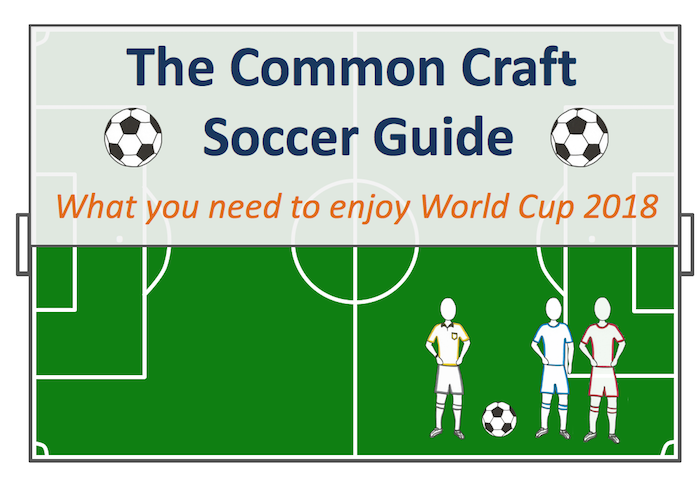
The World Cup of Soccer is here and this guide will help you understand the sport quickly.
Guide Entry:
About the 2018 World Cup
Guide entry section:
Guide Entry Text:
World Cup 2018 is FINALLY here!
It's one of the biggest sporting events in the world and a key to enjoying the action is understanding the sport of soccer (internationally known as "football"). That's why this guide exists, to explain the basics of soccer.
Let's start with the World Cup
The World Cup is held every four years in a different location. The tournament starts on June 14, 2018 and ends July 15th, 2018, when two teams play a final match to decide the winner in Moscow, Russia.
Guide Entry Text:
The World Cup is made up of 32 national teams from around the world who qualify to participate over multiple years.
The national teams consist of players from the country they represent. Many of these players play professionally for teams in other countries, like England, and come together for tournaments like the World Cup.
There are two major stages in the World Cup, the Group Stage and Second Stage.
The Overall Format of the World Cup (0:44):
Image:
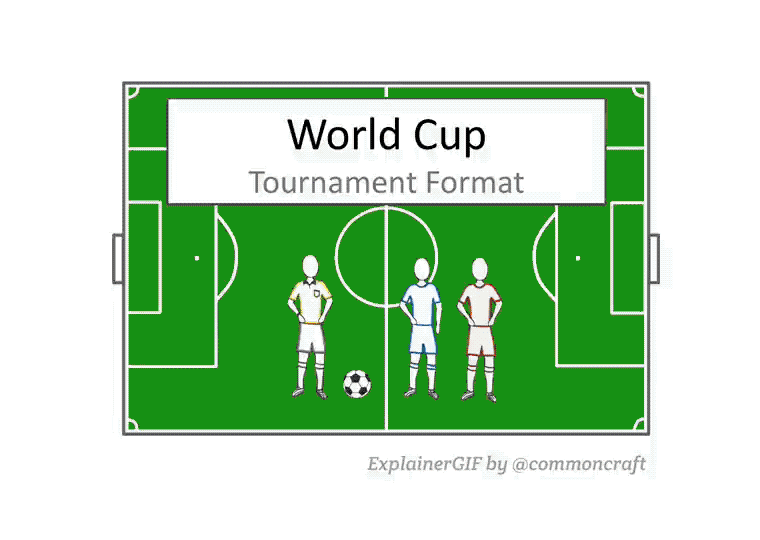
poster image:
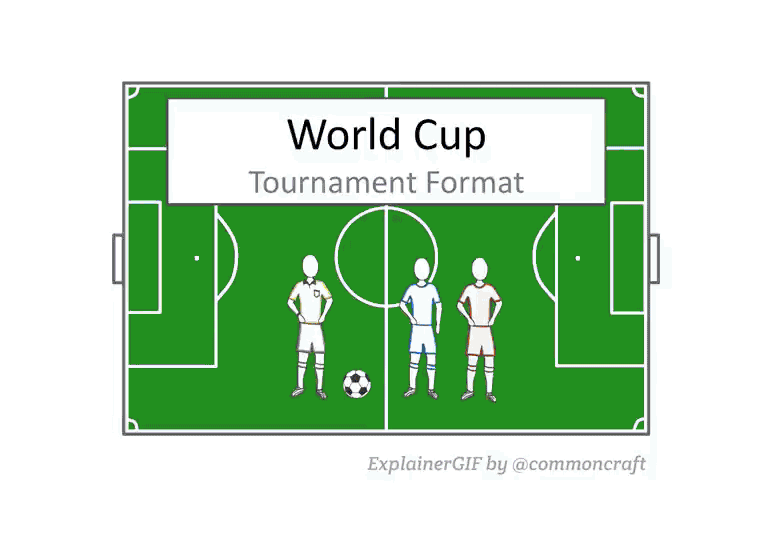
Guide Entry Text:
Understanding the Group Stage of the World Cup
The first part of the World Cup, the "Group Stage" can be the most confusing. It's a round-robin style tournament with 8 groups of 4 teams. The first and second place teams in each group advance to the second stage.
The World Cup Group Stage (0:41):
Image:
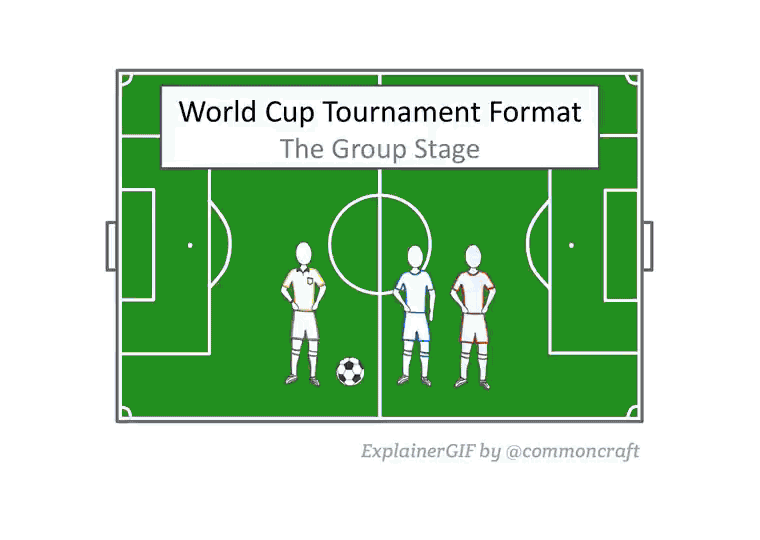
poster image:
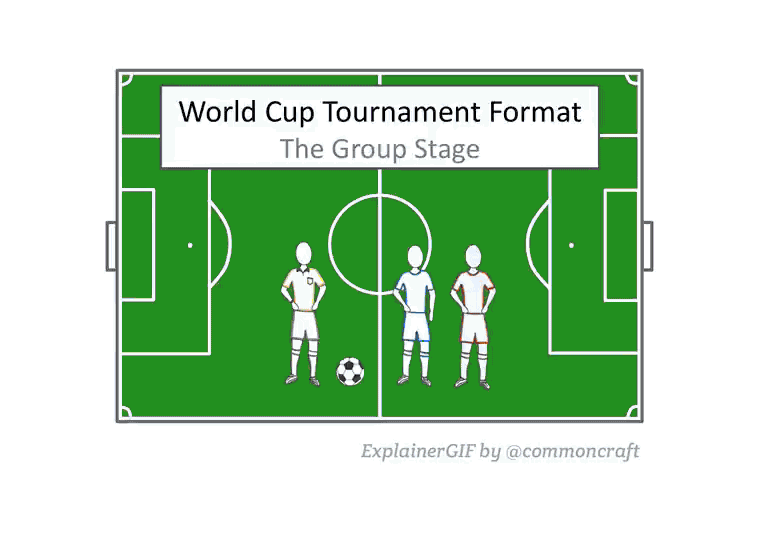
Guide Entry Text:
To Review:
- The World Cup is held every four years and is very important to many around the world.
- This year it's in Russia
- The teams are all national teams and include many of the best players from each country.
- The "Group Stage" tournament starts with 32 teams in a round-robin tournament with 8 groups of 4 teams.
- The 1st and 2nd place teams from each group advance to the Second Stage, or knockout round, with 16 teams.
- These teams play single elimination matches until the winner is declared.
- The World Cup Final match is scheduled for July 15th, 2018 in Moscow, Russia
Teams and Positions
Guide entry section:
Guide Entry Text:
Soccer is a team sport played with two teams of 11 players and one ball. The field is about the size of an American football field.
Understanding Teams and Positions (0:22):
Image:
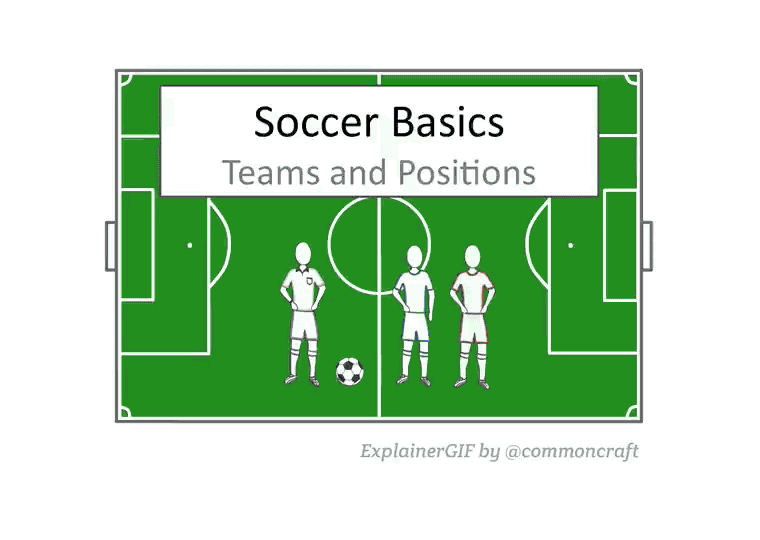
poster image:
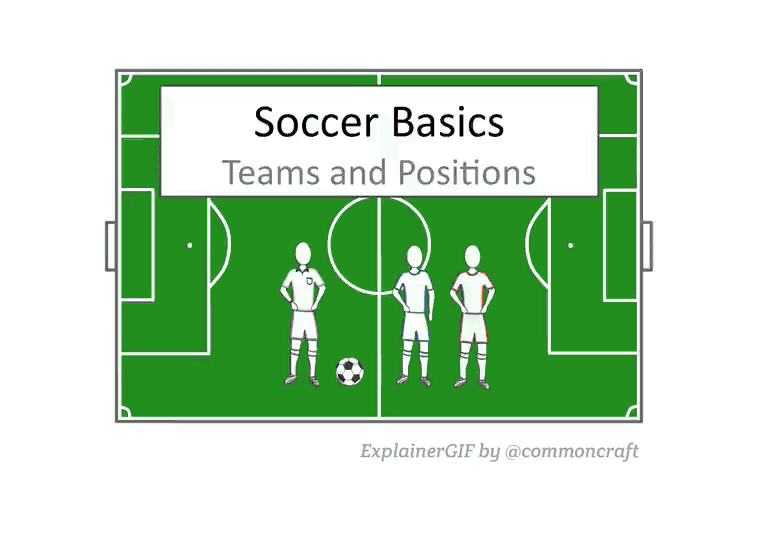
Guide Entry Text:
To Review:
- Teams are made of 10 players plus one goalkeeper.
- The object of the game is to put the ball in the other team’s goal.
- When a goal is scored, the team gets one point.
The Field or "Pitch"
Guide entry section:
Image:
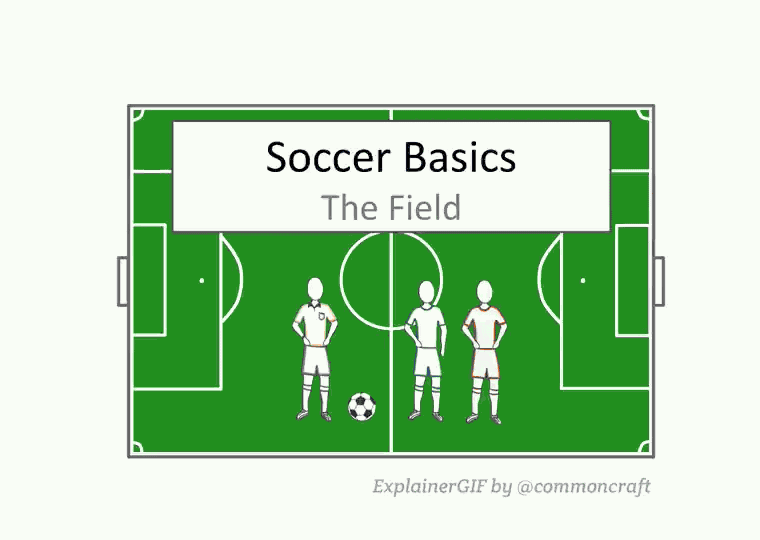
Guide Entry Text:
Soccer fields vary in size, but are always a rectangle and must be green.
What Makes a Soccer Field (0:41):
poster image:
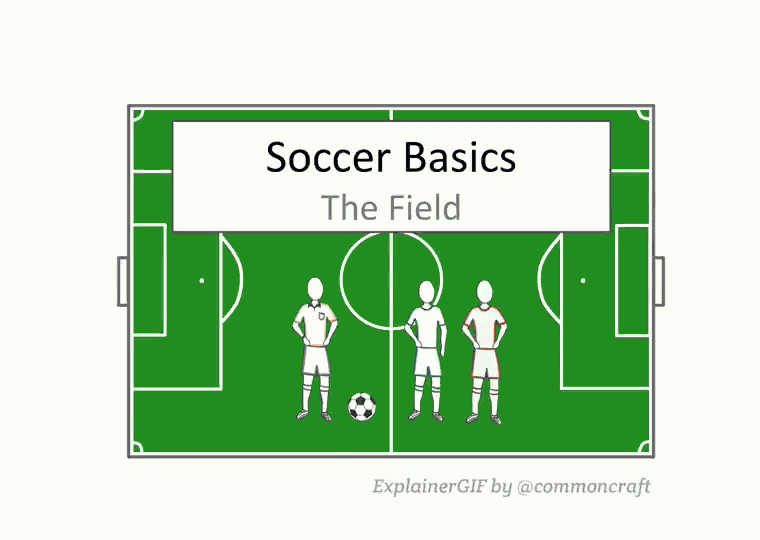
Guide Entry Text:
To Review:
- Soccer fields are rectangular and are made of grass or artificial turf.
- Minimum field dimensions are 70 yards by 110 yards.
- Both teams use the entire field.
The Play Clock, Stoppage Time and Extra Time
Guide entry section:
Guide Entry Text:
Soccer matches are 90 minutes long and made up of two 45 minute halves. The play clock in soccer operates differently than most other sports.
- It counts UP from 0 to 90 minutes.
- It never stops, except for halftime.
- The referee may add "stoppage time" at the end of each half.
Essentials of the Play Clock (0:38):
Image:
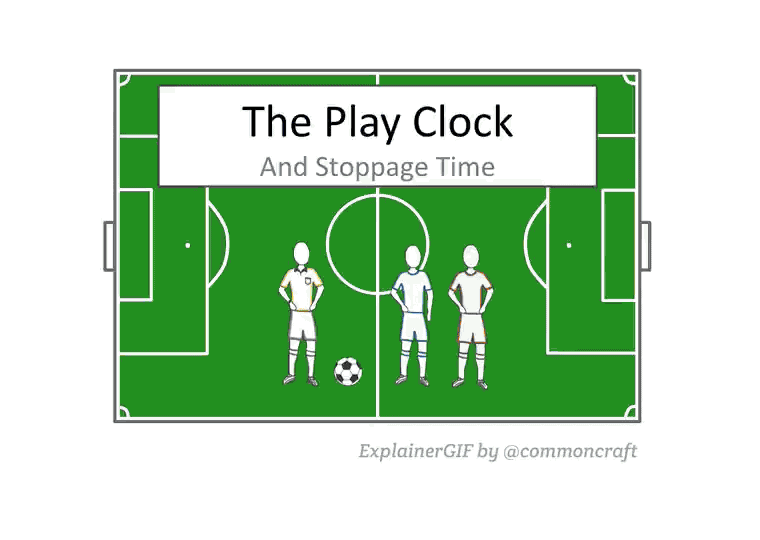
poster image:

Image:
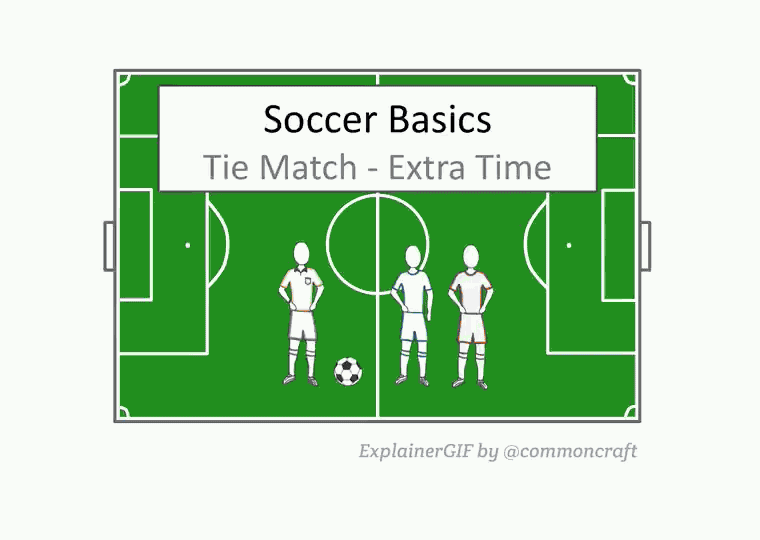
Guide Entry Text:
Soccer, compared to other sports, is a low scoring game. Many matches are decided by a single point. It is also common for matches to end in a tie score, called a "draw".
A draw is a common and acceptable outcome in most matches. But in tournaments, a winner must be declared. This happens through soccer's version of overtime, called "extra time".
How Tied Matches Are Decided in Tournament Play (0:33):
poster image:
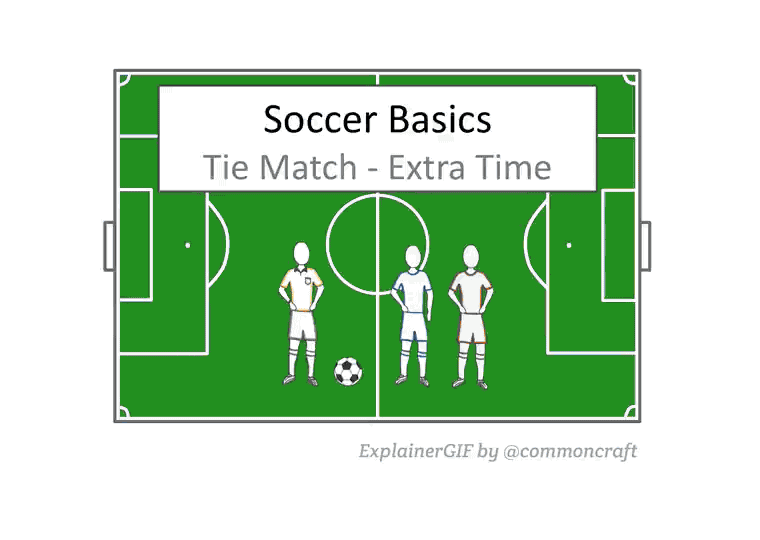
Guide Entry Text:
To Review:
- Soccer matches are 90 minutes long, with two 45 minute halves.
- The play clock counts UP from 0 to 90 minutes.
- The play clock never stops, except for halftime.
- The referee may add a few minutes to each half for "stoppage time".
- When a match ends in a tie, it may go into "extra time".
- If a match is tied after extra time, it will go to a shootout.
Overtime and Shootouts
Guide entry section:
Guide Entry Text:
In the World Cup, a winner must be declared once the tournament is reduced to 16 teams. This means that no match can end in a tie score, or "draw".
If the 90 minute match ends with a draw, the match goes to "extra time" or overtime. If the score is still tied, a shootout decides the winner.
Understanding the Shootout (0:55):
Image:
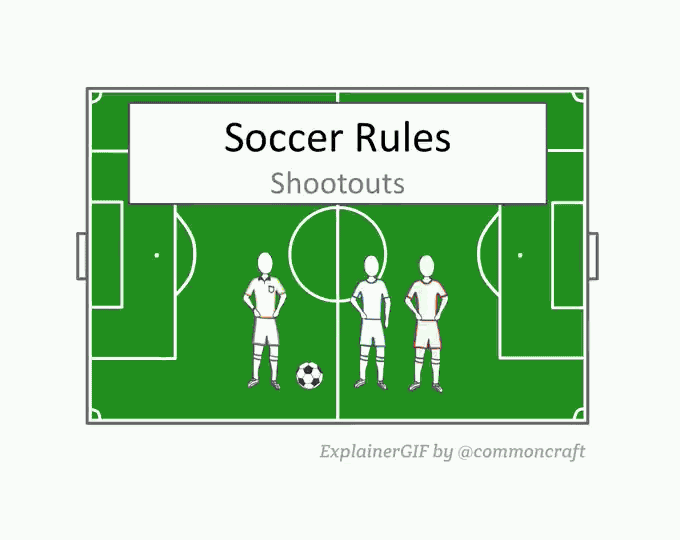
poster image:
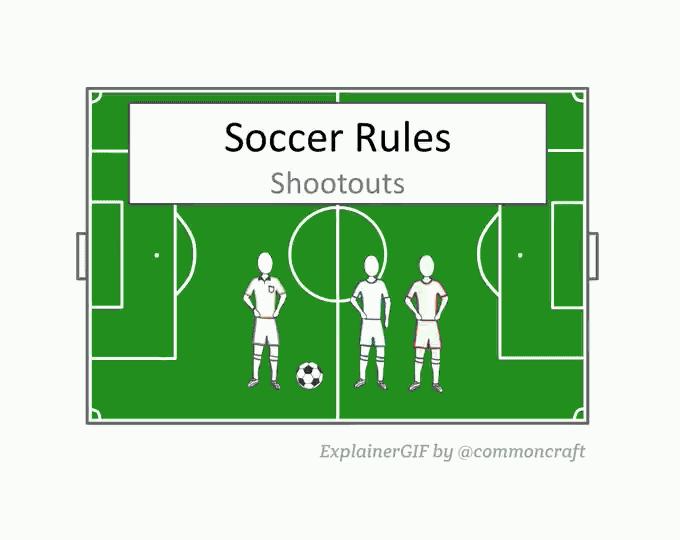
Guide Entry Text:
To Review:
- In soccer tournaments, matches cannot end with a tie score or "draw". A winner must be declared.
- If a normal match ends with a draw, two 15 minute halves are played. This is not a "sudden death" situation.
- If the match is still tied, a shootout is used to declare the winner.
- 5 players from each team are selected along with one goalkeeper.
- Each player shoots one penalty kick, alternating by team (5 rounds).
- If one team has more goals at the end of the kicks, that team wins.
- If the shootout score is tied after the first 5 rounds, it goes to sudden death.
- In sudden death, the first team to score while the other team misses is declared the winner.
- A single point is added to the winner's final match score.
Referees and Laws of the Game
Guide entry section:
Guide Entry Text:
The experience of watching soccer can be perplexing (and frustrating).
Play sometimes stops for no apparent reason. Even the biggest fans are sometimes confused about why a referee called a foul. It's part of the game. But with a little knowledge, you'll start to recognize fouls and you might even disagree - and that's OK.
Part of the allure of soccer is how it is officiated. Like many other sports, many calls are based on the referee's judgment and quick decision making.
At heart, the game is based on 17 laws known at "The Laws of the Game".
17 Laws of the Game
The Laws of the Game are governed by a global organization called FIFA (Fédération Internationale de Football Association) or in English (International Federation of Association Football). FIFA is at the center of global soccer and organizes the World Cup among many other events. FIFA manages the Laws and certifies the referees.
Download a full version of the Laws here.
Here are the laws:
Law 1: The Field of Play
Law 2: The Ball
Law 3: The Number of Players
Law 4: The Players' Equipment
Law 5: The Referee
Law 6: The Assistant Referees
Law 7: The Duration of the Match
Law 8: The start and restart of play
Law 9: Ball in and out of play
Law 10: The Method of Scoring
Law 11: Offside
Law 12: Fouls and Misconduct
Law 13: Free kicks (direct and indirect)
Law 14: The Penalty Kick
Law 15: The Throw-in
Law 16: The Goal Kick
Law 17: Corner kick
Within each of the laws are "interpretations" that become very specific.
The Referees
In most high level matches like the World Cup, there are multiple referees - a referee, two assistant referees, a fourth official and a team of video assistant referees.
The duties of each include:
Referee
- Enforces laws of the game (issues penalties)
- Controls the match with other referees
- Official timekeeper of the match
- Ensures ball and equipment are appropriate
Assistant Referee
- Indicates when ball goes out-of-bounds
- Indicates possession when ball goes out-of-bounds
- Indicates offside
- Substitution support
- Aids referee in calls when the referee's view is obstructed
Fouth Official (off-field, not required)
- Administrative duties
- Substitution support
- Visuals (lit signs) for substitutions and stoppage time
Video Assistant Referees or "VAR" (4 referees in an off-field booth with video monitors)
- First use in World Cup
- Uses video footage to make calls
- On field referee can communicate with VAR referee and request video review
- VAR can only be used to make calls regarding goals, penalty decisions, red cards and cases of mistaken identity.
Overall, the Referee manages the whole field and is the bottom line on all calls. Assistant Referees manage the sidelines and raise flags when the ball goes out-of-bounds or a player is offside.
The Referees:
Image:

Guide Entry Text:
To Review:
- The referee enforces and interprets the 17 Laws of the Game.
- The Laws and referees are governed by FIFA, the organization that organizes the World Cup.
- In high profile matches there are often 4 referees: a referee, two assitant referees and a fouth official.
- Each referee has a specific set of duties during the match.
Restarting: Throw-ins, Corners and Goal Kicks
Guide entry section:
Guide Entry Text:
Soccer is a very dynamic sport. Players are constantly moving and the ball rarely stops. There are no time-outs or commercial breaks.
But play does stop for short moments. When the ball leaves the playing field and when a team scores, play must be restarted.
What Happens When the Ball Leaves the Field (0:53):
Image:
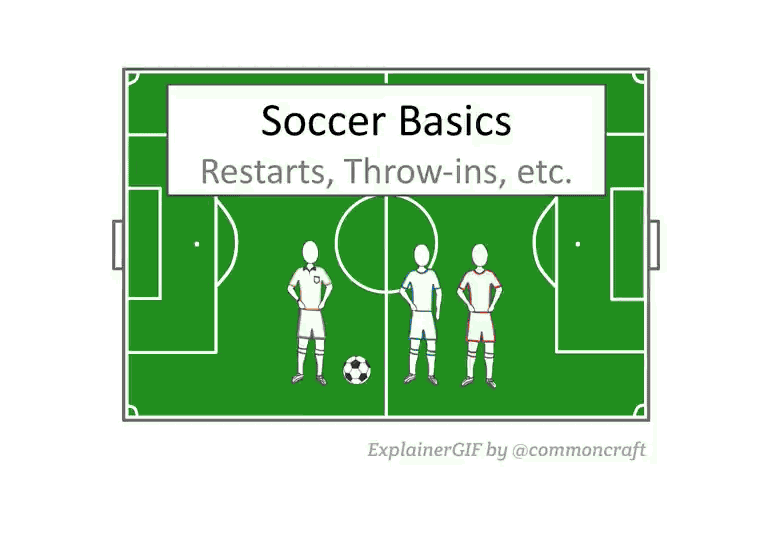
poster image:
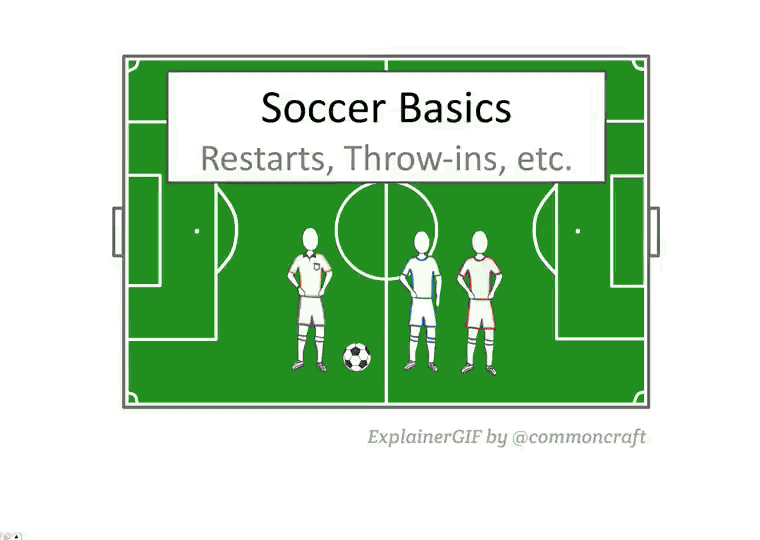
Guide Entry Text:
The most basic rule of restarts is about possession.
Whomever touches the ball before it goes out of bounds loses possession. A duty of the assistant referee is to indicate this possession. Once the call is made, the team restarts the match with a throw-in, corner kick or goal kick.
To Review:
- Whenever the ball leaves the playing field, play must be restarted.
- If the ball crosses the sideline or "touchline", a throw-in is used to restart the match.
- If the ball crosses the goal line, it will result in a corner kick or goal kick.
- If the defense touches the ball before it crosses the goal line, possession goes to the offense and they kick a corner kick.
- If the offense touches the ball before it crosses the goal line, possession goes to the defense and they kick a goal kick.
Handballs
Guide entry section:
Guide Entry Text:
One of the most basic rules in soccer relates to the use of hands and arms.
No players, except the goalkeeper, can use their hands while the ball is in play. If they do, it results in a free kick for the other team. Incidental contact with hands or arms is often acceptable.
Handballs and Associated Penalties (0:35):
Image:
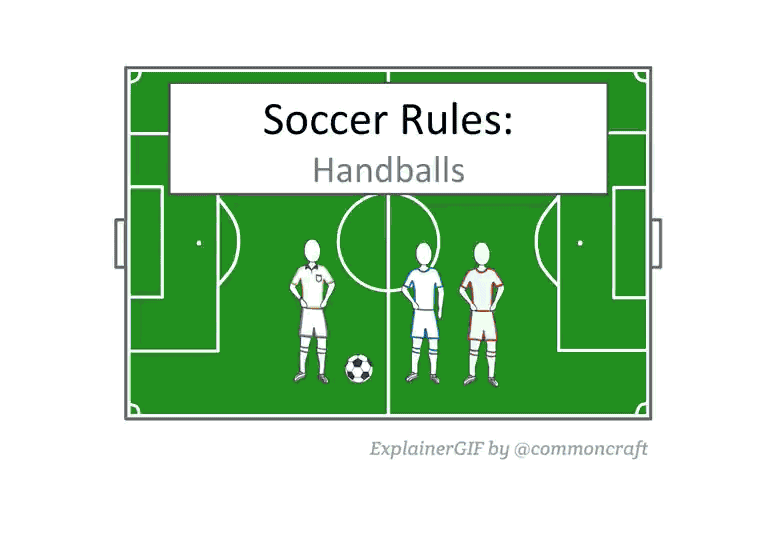
poster image:
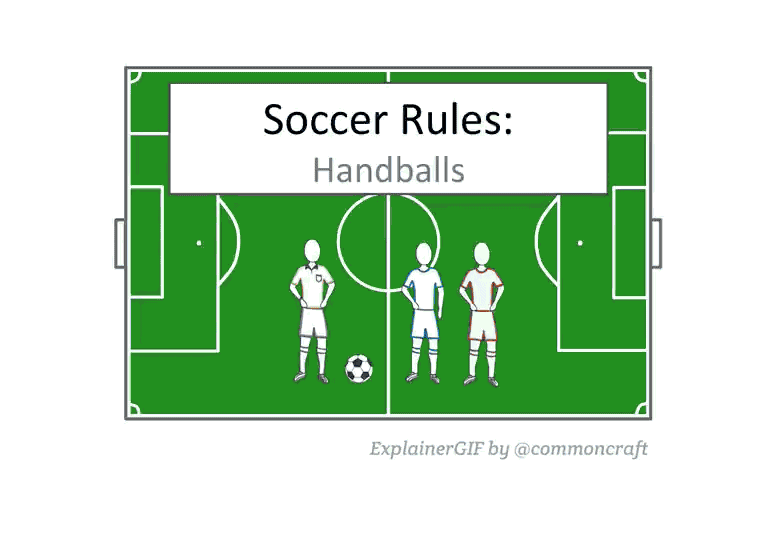
Guide Entry Text:
Important Note: A handball must be "deliberate" to be called by the referee. This means that incidental contact (the ball hit a players arm at his side) is usually okay. Often, if the player's hand or arm is in an "unnatural" position (high in the air) or attempts to deflect the ball, it's called a handball. As always, it's a judgment call for the referee.
To Review:
- No player, except the goalkeeper, can touch the ball with hands or arms during play.
- This is called a "handball" and results in a free kick or penalty kick for the opposing team.
- Handballs must be deemed "deliberate" by the referee. Incidental contact is okay.
- The goalkeeper can only use hands or arms inside the penalty area.
What is a Foul?
Guide entry section:
Image:
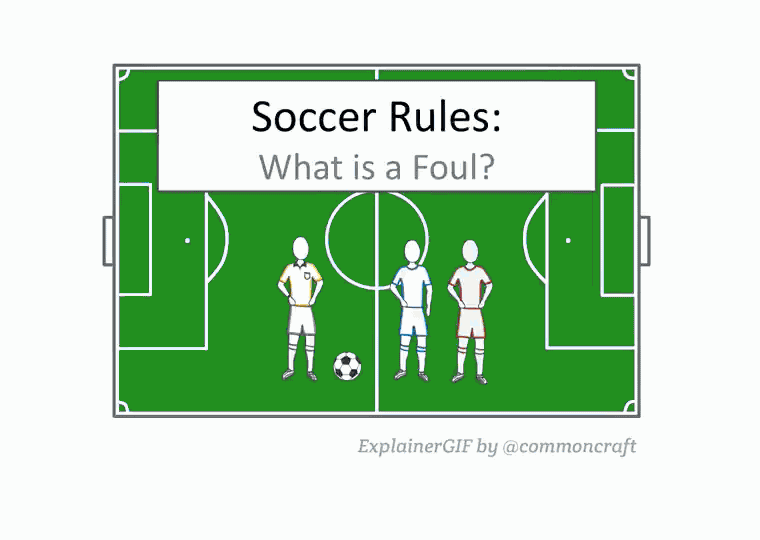
Guide Entry Text:
The job of a referee can be a difficult one.
Referees make split-second decisions based on their judgment and intepretation of the laws of the game. They call fouls on the action they see live, and without any support from instant replay. Fouling usually involves player-on-player contact and can result in free kicks.
What is a Foul (0:49)?
poster image:
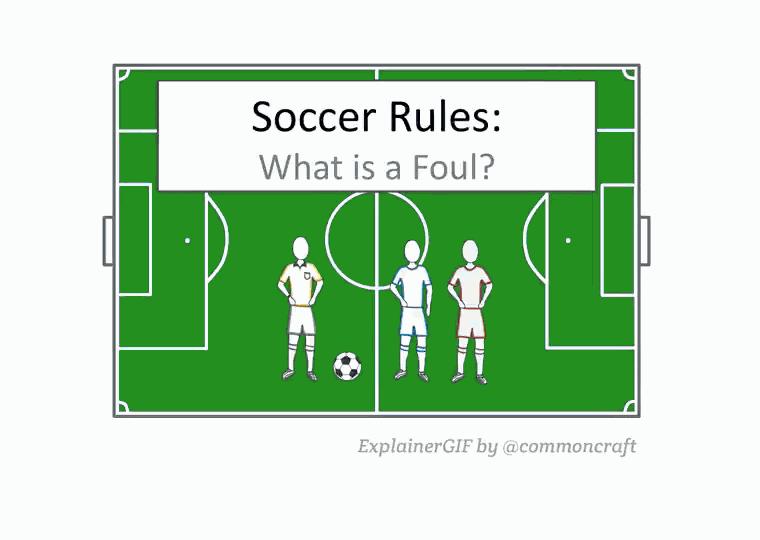
Guide Entry Text:
Game Changers
When an offensive player is fouled inside the penalty area, it results in a penalty kick for the offense. Because penalty kicks often result in goals scored, these kinds of fouls can be game-changing events.
Most fouls result in free kicks that simply change possession from one team to another. But there are "bad fouls" that can alter the match in fundamental ways. When a foul is violent and/or dangerous to another player, for instance, the referee may show a red card and eject the player from the match. This is a game changer because the ejected player's team will have to continue with one fewer player.
To Review:
- The job of the referee is to protect players and ensure fair play. Calling fouls is one way the referee discourages unsafe and unfair play.
- Fouls usually involve player-on-player contact.
- When contact is reckless or unnecessary, a foul will be called.
- When two players go for the ball, the referee may consider if the player was going for the ball or the opposing player. If the tackling player touches the opposing player before the ball, a foul may be called.
- Fouls can result in free kicks and penalty kicks.
- Fouls are based on referee judgment.
Fragment:
Fouls and Free Kicks
Guide entry section:
Guide Entry Text:
It's not always obvious why play stops in soccer.
Often, it is because the referee called a foul. When a foul occurs, possession changes to the team who was fouled and they kick a free kick or penalty kick.
The Essentials of Fouls and Free Kicks (0:31):
Image:
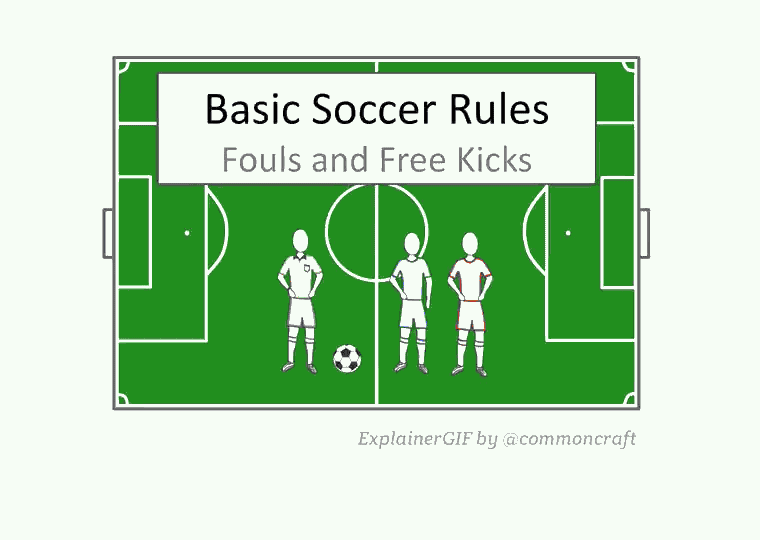
poster image:
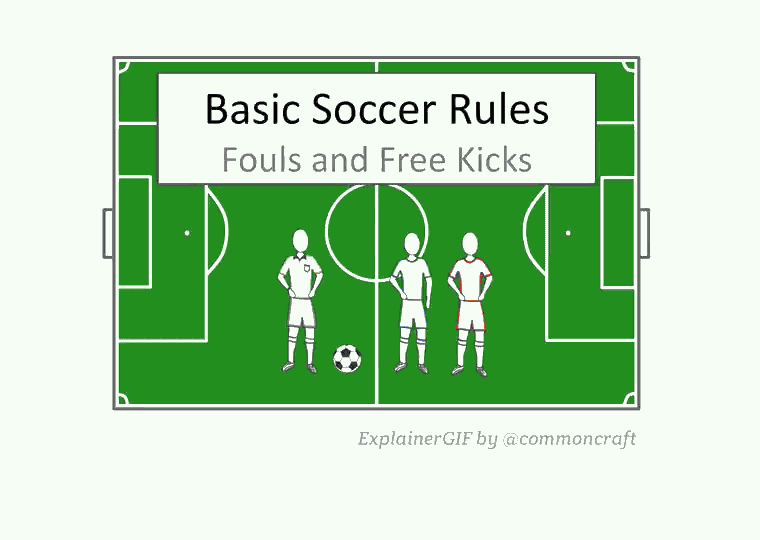
Guide Entry Text:
There are two different kinds of free kicks, direct and indirect, and they each have specific rules.
The key difference between the two involves scoring:
- If a player is taking a direct kick and is close to the goal, the player may score without any other player touching the ball. A penalty kick is a type of direct kick.
- If a player is taking an indirect kick, the player cannot score unless another player touches the ball first.
In general, direct kicks are awarded for more serious fouls (dangerous play) and indirect kicks for lesser fouls and other minor issues.
Guide Entry Text:
To Review:
- Fouls are one of the few reasons the action stops in soccer.
- A foul often involves unnecessary or reckless player-on-player contact.
- Fouls result in free kicks with the opposing team at least 10 yards from the ball.
- When a foul is called in the penalty area, it results in a penalty kick.
- Free kicks can be direct or indirect.
Fouls, Yellow and Red Cards
Guide entry section:
Guide Entry Text:
While fouls often involve contact, misconduct often relates to a single player’s actions. This could be disagreement with the referee, unsporting conduct, violence, intentional fouling and more.
Yellow Cards, Red Cards and What They Mean (0:36):
Image:

poster image:

Guide Entry Text:
Cards and Game Suspensions:
- When a player is shown a "straight red" (not an accumulation of yellow cards) for a bad foul, the player will be sent off and be suspended for at least the next match.
- When a player accumulates two yellow cards over a single match, they can finish the current match, but will miss the next one.
- Accumulating two yellow cards over multiple matches will also result in a red card and suspension.
- In the World Cup, the yellow cards accumulate through the first five matches and reset after the quarterfinal games. This ensures the final teams are at full strength.
To Review:
- While fouls are player-on-player, the referee may also penalize players for misconduct. This may include unsporting conduct, persistent fouls, delaying the match and more.
- The referee uses a system of cards to penalize players for fouls and misconduct.
- A yellow card is a warning.
- A red card means that the player has been ejected from the match or "sent off". The player must leave the field immediately and the player's team must play with one fewer player for the rest of the match.
- Two yellow cards received in one match for a single player equals a red card and the player must leave the match.
- A "straight red" for an egregious action, for instance, will result in a suspension from the following match as well.
The Offside Call
Guide entry section:
Guide Entry Text:
Offside is one of the most confusing rules in the game - and rightfully so. It involves a number of moving parts.
The only way to understand offside is through visuals.
NOTE: The two animations below are tightly connected. View them both.
Part 1: The Basics of the Offside Call (0:52):
Image:
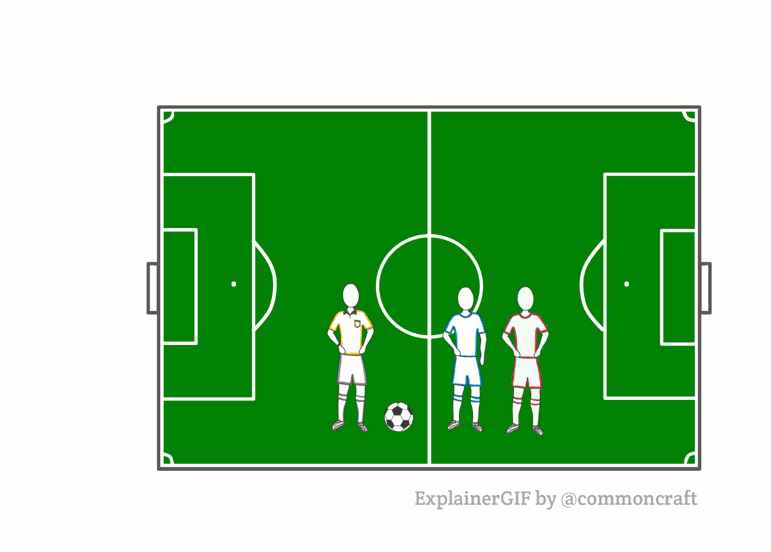
poster image:
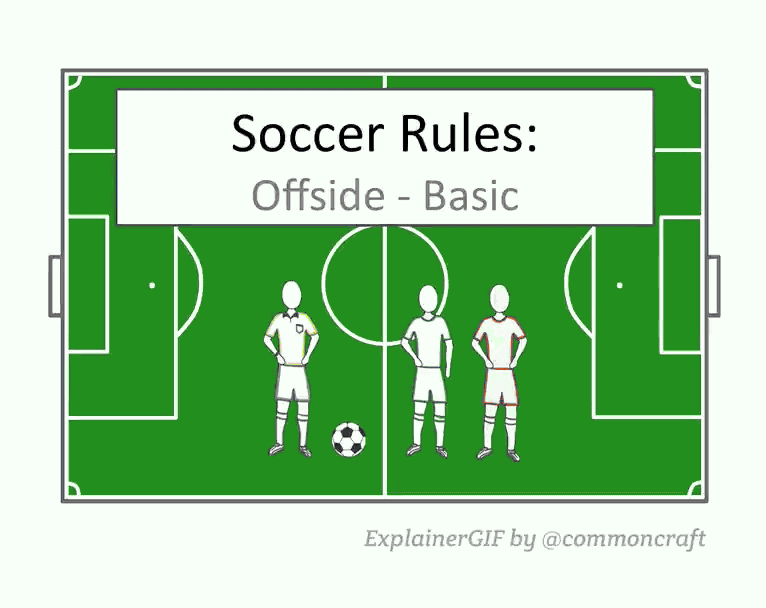
Guide Entry Text:
Now that you have the basic idea, there is one more detail to understand and it's all about timing.
Offside only matters the instant the ball is passed to the player.
Part 2: Why Pass Timing Matters in Offside Calls (0:40):
Image:
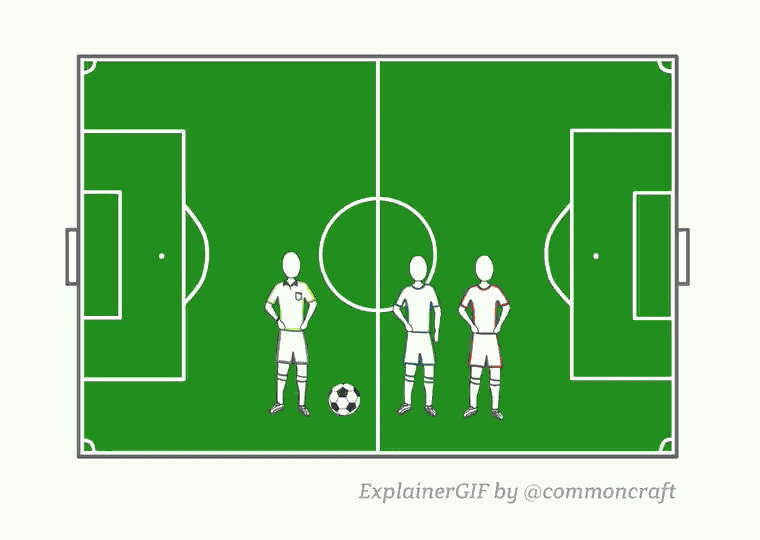
poster image:
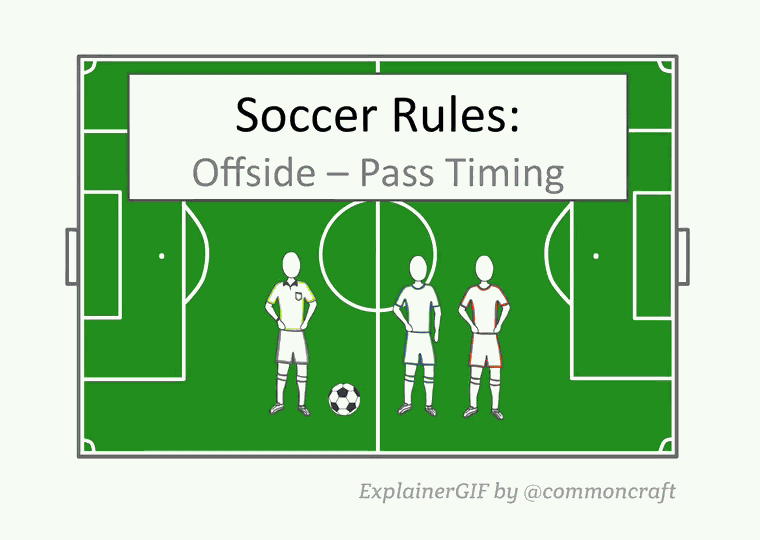
Guide Entry Text:
Click the bird to tweet the message below:
"The offside rule in soccer, explained with animations: http://ctt.ec/oXZgK+"
You might wonder why this rule exists. There are a couple of reasons...
- First, it ensures fair play. This rule discourages players from "hanging around" the goal.
- Second, it makes the game more compact. Because players cannot receive a pass in an offside position, much of the play occurs between the offside lines.
This smaller play area makes for a more entertaining and dynamic game to watch:
Image:
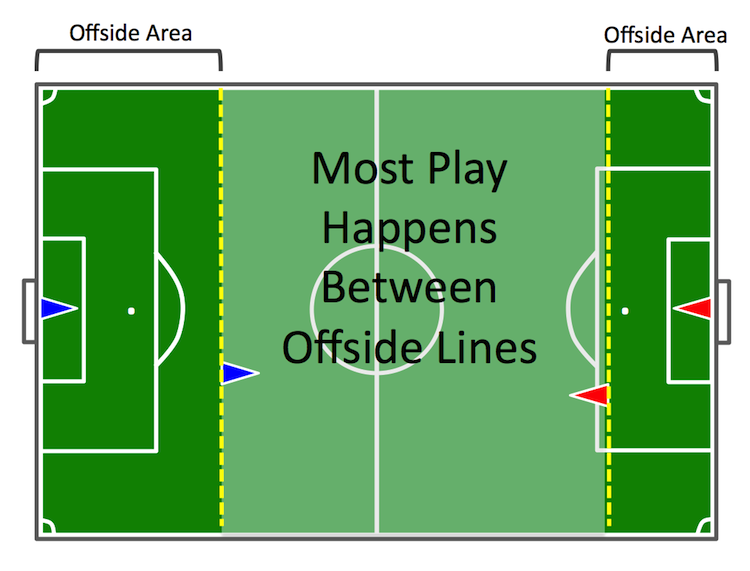
Guide Entry Text:
A few more details to remember:
- A player is not offside unless the ball is passed to them.
- A player receiving a throw-in cannot be offside.
- A player receiving a corner kick cannot be offside.
- A player can be offside during a free kick.
To Review:
- Offside is a rule in soccer that ensures an offensive player does not have an unfair advantage.
- It is governed by imaginary lines on both sides of the field. These lines are based on the position of two different points: Either the second-to-last defender or the position of the ball.
- If an offensive player goes past the offside line and receives the ball, the player is often offside.
- The player's position only counts at the moment the ball is passed to the player.
- When offside is called, play stops and the other team gets a free kick from the place where the player was offside.
- Players cannot be offside on throw-ins or corner kicks, but can be offside on free kicks.
Acknowledgements and More Resources
Guide entry section:
Guide Entry Text:
Most of the information found in this guide is based on FIFA's The Laws of the Game. (PDF version)
The following Wikipedia articles were also helpful:
A number of soccer nerds jumped in to help review the GIFs in this guide. They are:
- Anthony Stevens (@anthonyrstevens)
- Darren Barefoot (@dbarefoot)
- Steve Manning
- Brenton Walters (@brentonwalters)
If you have any feedback or comments, please contact us.
There are a number of awesome resources on the Web for understanding soccer and planning for the World Cup. Check them out:
- US TV Schedule
- 10 Players to Watch
- How to Watch Like a Soccer Nerd
- Current Ranking of National Teams (FIFA)
